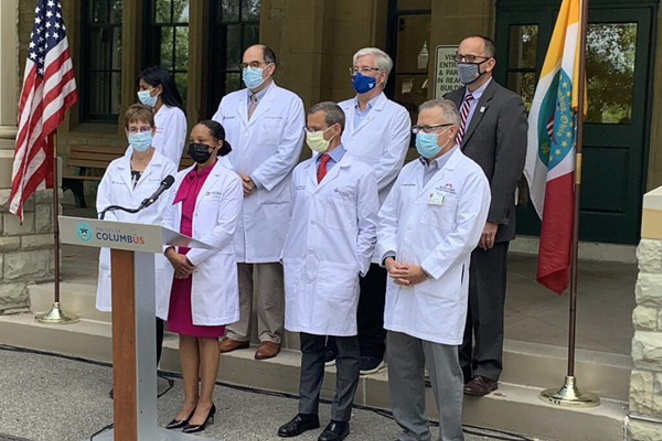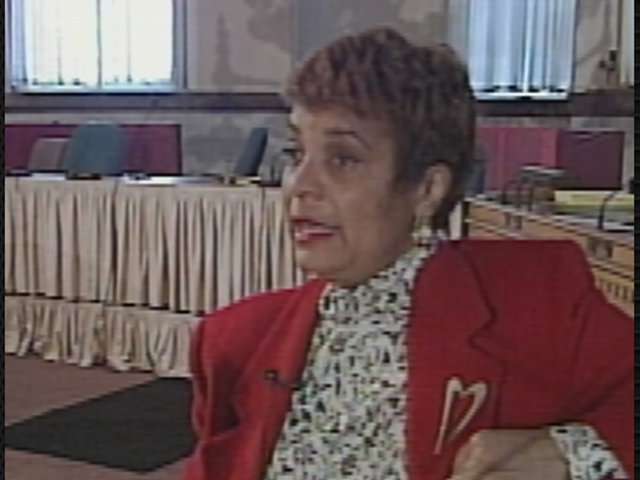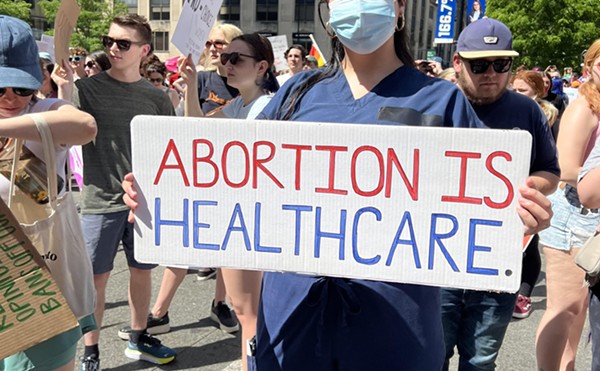
Amid a COVID-19 surge in Ohio’s most populous county, health officials wanted to once again require the use of face masks indoors to slow the spread of COVID-19.
Unlike July 2020, however, this time they hit a wall. State legislation that took effect earlier this summer forbids health departments from issuing blanket health mandates among people not diagnosed with any disease.
So despite a 56% increase in the average daily case rate in the county, which officials attribute to the hyper-transmissible delta variant flooding the state with new cases, the health department says they can do little more than issue a “mask advisory” that’s not backed by any force of law.
“This is an advisory. It’s not an order and it’s not a mandate,” said Columbus Public Health Commissioner Dr. Mysheika Roberts at a news conference. “The reason why it’s not an order or a mandate is because of state Senate Bill 22, which prohibits us from doing any order that would be a blanket order to the whole population.”
This marks one of the first tangible effects of the legislation, which critics called a naked attack on public health, to play out during an ongoing and now again worsening pandemic.
Republicans passed SB 22 without any Democratic support. They even overrode a veto from fellow Republican Gov. Mike DeWine to do so. Ohio was one of eight states as of May 2021 to pass legislation aimed to limit public health authority during the pandemic, according to a review from The Network for Public Health Law. The bill’s sponsors did not respond to inquiries.
However, this isn’t the only instance of emerging schisms between public health guidance and policy.
Columbus Public Health issued guidance last week recommending schools, some of whom host children 11 and younger who are ineligible for vaccination, to require all students to wear face masks. However, school districts and universities have split on the issue, and health officials said they hope those districts that went mask-optional will reconsider.
“There is zero downside to wearing a mask,” said Dr. Rustin Morse, chief medical officer at Nationwide Children’s Hospital, who appeared alongside health officials Thursday. “That’s what makes it so difficult to reconcile in my head: I know people have opinions, I know it has been politicized, but there’s no downside to wearing a mask. There’s only upside potential for our students and our teachers.”
Three vaccines are available for use as safe and effective preventative measures against COVID-19, although they’re only available to those 12 and up.
Despite their availability over the last seven months, less than half the state is vaccinated against COVID-19. Franklin County Health Commissioner Joe Mazzola said this figure is slightly better in Franklin County at 55% but still nowhere near widespread enough to smother the virus entirely.
Dr. Veena Satyapriya, a physician at OSU Wexner Medical Center, shared a cautionary tale of the implications of skipping on vaccination. She said a healthy, 28-year-old patient of hers skipped vaccination, contracted COVID-19, and went home until his blood oxygen unexpectedly plummeted.
Doctors eventually set him up with a breathing tube and ventilator and placed him on his belly, a treatment to oxygenate COVID-19 patients. When this didn’t work, he was transferred to a special unit for what’s known as extracorporeal membrane oxygenation, a critical care procedure where a machine oxygenates the blood instead of the heart and lungs. He’s now stable and fighting for his life.
“Not getting vaccinated means … your family may have to experience the helpless feeling of waiting outside for news every few hours because they can’t go inside to see you,” Satyapriya said, reading a statement from the man’s wife and parents.
“We weren’t prepared for how sick he would be so fast. We wanted to share his experiences to inform others of how devastating this virus can be, particularly if you do not get vaccinated.”
Taking questions from reporters, Roberts said she was “completely supportive” of employers who have required that their employees seek vaccination against COVID-19. Dr. Mark Herbert, an infectious disease specialist with the Mount Carmel Health System, noted his hospital network and others around central Ohio have started to require vaccination among their employees.
He referred to the step as a “beacon of light” to employers outside the health care industry that if they wish to help, mandating vaccination is a route to do so.
A landmark 1905 U.S. Supreme Court case, a recent federal appellate court ruling upholding the University of Indiana’s COVID-19 vaccine requirement, and a legal opinion from the U.S. Equal Employment Opportunity Commission likely provide safe legal ground for a mandate. However, the politics are dicer.
This summer, Gov. Mike DeWine signed legislation that — effective Oct. 13 — forbids schools and universities from requiring a vaccine, unless it has received full authorization from the U.S. Food and Drug Administration. The COVID-19 vaccines are currently available for use under an “emergency use authorization,” a streamlined regulatory process used during public health emergencies.
The new law also prevents schools from treating vaccinated students differently than unvaccinated ones in terms of masking and social distancing. Pending legislation would go even further, essentially banning vaccination mandates from any employer, business, school, insurer, hospital, nursing home and more.
Mazzola, who is also the president of the board of the Association of Ohio Health Commissioners, downplayed schisms between public health guidance and state policy. The public, he said, understands the right thing to do, regardless of political actions that limit the public health officials’ authority.
“I think, unfortunately, it has become political, [but] public health is not political,” he said. “Public health is science-based, public health is data-driven, public health is about making recommendations, issuing guidance, and putting in policies that protect the general population. The recommendations we’re talking about here this morning will do that. It’ll keep kids in school, it’ll keep employers open for business, it’ll keep people healthy. I think the public understands that.”
This story was originally published by the Ohio Capital Journal and republished here with permission.
Sign up for our weekly newsletters to get the latest on the news, things to do and places to eat delivered right to your inbox.





